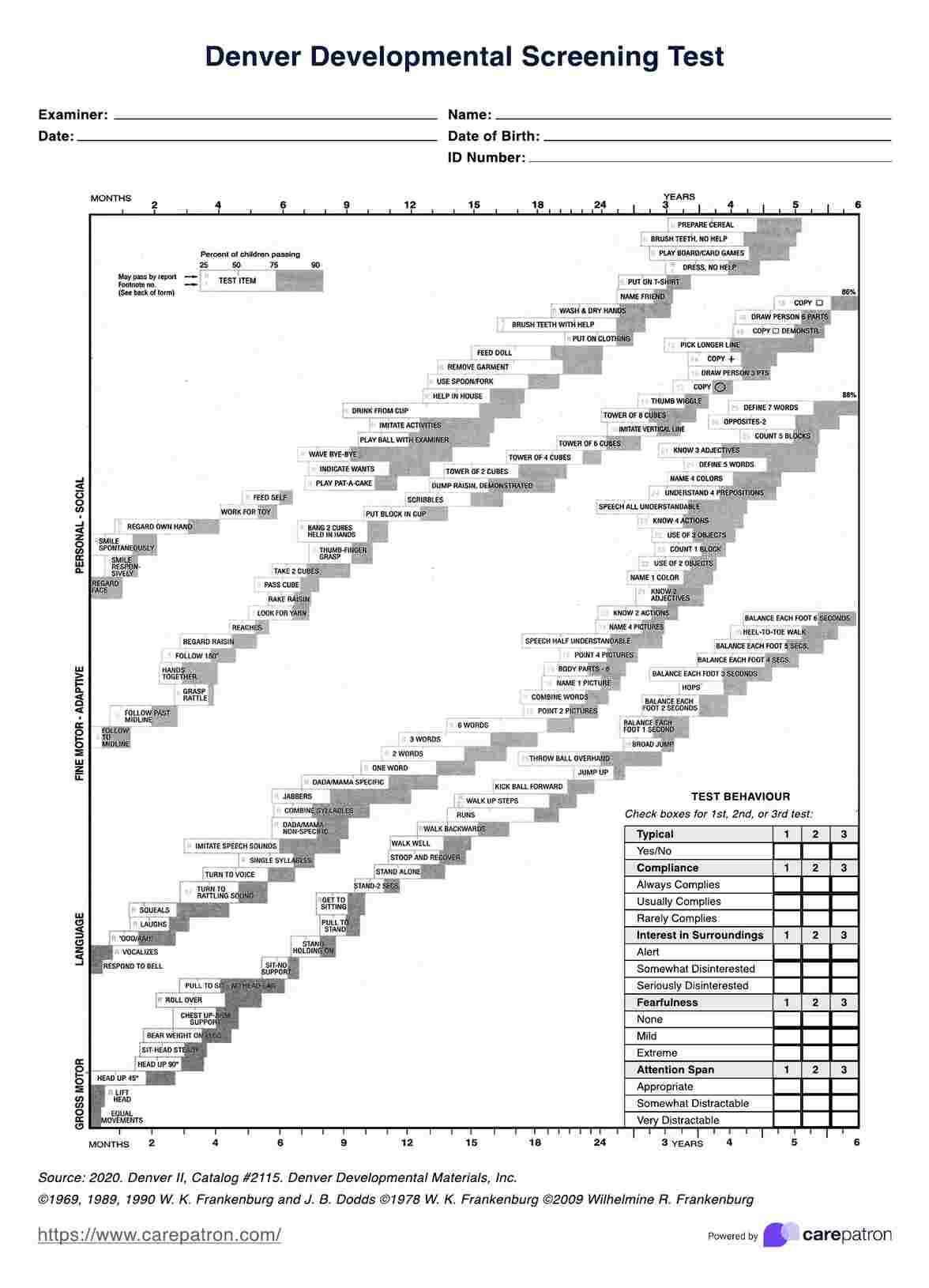The DDST is typically used for children aged from birth to 6 years old. It's often administered during routine well-child check-ups at specific intervals, such as at 1 month, 3 months, 6 months, and so on, up to 6 years of age. However, it can also be utilized when there are concerns about a child's development at any point within this age range.

Denver Developmental Screening Test
The Denver Developmental Screening Test is considered one of the founding screening tools in behavioral psychology, learn the ins and outs and best use of this tool through this in-depth guide!
Denver Developmental Screening Test Template
Commonly asked questions
The DDST is a screening tool designed to identify potential developmental delays or concerns. While it can indicate areas where a child might be experiencing challenges or delays compared to established milestones, it does not offer a diagnosis. Its primary purpose is to flag potential issues, prompting further evaluation by healthcare professionals to determine if there's a need for more comprehensive assessments or interventions.
If a child exhibits delays or discrepancies in specific developmental areas during the DDST, it doesn't necessarily confirm a developmental issue. It suggests that further evaluation may be needed to understand the child's developmental progress more comprehensively.
EHR and practice management software
Get started for free
*No credit card required
Free
$0/usd
Unlimited clients
Telehealth
1GB of storage
Client portal text
Automated billing and online payments











